How to Plant and Grow Jupiter's Beard

Jupiter's Beard is a perennial known for its almost nonstop blooming ability and extreme drought tolerance. This semi-woody perennial forms dense clusters of brightly colored flowers from late spring until fall. Jupiter's Beard makes a beautiful cut flower because of its long vase life and prolific blossoms.
Most commonly found with bright glowing red blossoms, Jupiter's Beard may also display pink, white, or even blue flowers that attract pollinators like bees, butterflies, and even hummingbirds. Jupiter's Beard blossoms boast a long bloom period. Flowers begin appearing in late spring or early summer, and numerous clusters of tiny flowers bloom until frost.
:How to Create a Beautiful Pollinator Garden for Butterflies and Bees
Where to Plant Jupiter's Beard
Grow Jupiter's Beard where it will get plenty of sunshine to keep the soil dry and prevent crown rot, common in moist soil. Full sun also encourages the best blossoms and sturdy plants. Grow in cottage gardens, along stone walls, or on a slope to help prevent erosion.
How and When to Plant Jupiter's Beard
Jupiter's Beard seeds are easy to start, either by planting directly in the ground or indoors about 6-8 weeks before the last frost.
Jupiter's Beard Care Tips
One of the significant advantages of Jupiter's Beard is its extreme drought tolerance. As a result, it has minimal care needs.
Light
Jupiter's Beard prefers a hot, full sun that helps ensure it can dry out between waterings.
Soil and Water
Native to Mediterranean areas, these plants need well-drained soil to thrive. They're highly tolerant of poor soil, even clay, as long as they can dry out. Jupiter's Beard prefers alkaline soil. If you're hoping to plant this perennial in more acidic soil, it will be beneficial to include some limestone to create a more hospitable area for Jupiter's Beard to grow. Water only when there isn't enough rain or the soil is extremely dry.
Temperature and Humidity
Jupiter's Beard prefers warm weather, but not overly hot and humid.
Fertilizer
Jupiter's Beard takes poor soils in stride so it won't need supplemental fertilizer.
Pruning
In many garden settings, Jupiter's Beard is an aggressive spreader, almost to the point of being weedy. Because of the weedy habit, it is best to deadhead flowers once they have finished blooming. This helps prevent the spread of this plant from their fluffy, almost dandelion-like seed heads. Later in the summer, plants may begin to look a little ragged and may benefit from a good pruning. This can also help to produce a second round of blossoms on plants.
Pests and Problems
Jupiter's Beard has no big problems with garden pests or fungus. Sometimes mealy bugs or aphids will show up, but they can be removed with a spray of water.
How to Propagate Jupiter's Beard
Propagate Jupiter's beard through cuttings in the spring or division. It's best to divide Jupiter's beard in early spring just as the new foliage emerges. Dividing older plants can be tricky as they develop woody bases.
:The 10 Worst Invasive Plants to Watch Out for in Your Region
Types of Jupiter's Beard
Red Centranthus
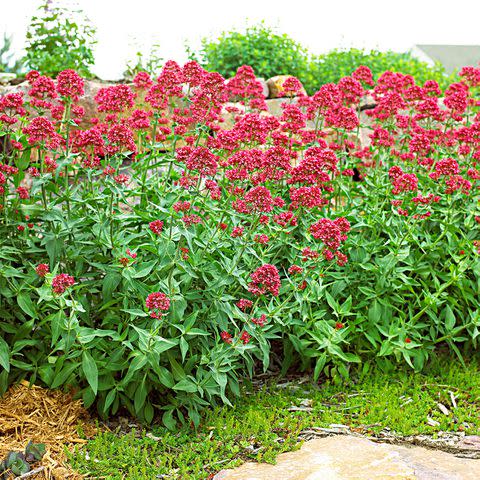
Centranthus ruber 'Coccineus' deep rosy-pink blooms have a more intense hue than the straight species.
White Centranthus
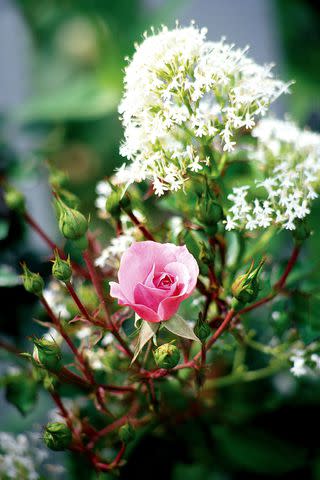
Centranthus ruber 'Albus' has all the same qualities of the species, except blooms are pure white.
Jupiter's Beard Companion Plants
Lamb's Ear
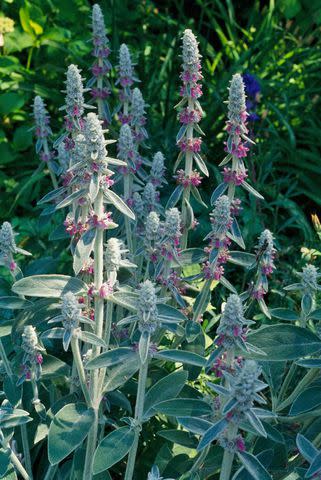
Lamb's-ear is a top pick for a groundcover in a hot, baked spot. Its silver-felted foliage quickly forms a dense mat. It also contrasts nicely with other foliage and most flowers. It enhances almost everything. Depending on the type and your growing conditions, it may self-sow freely to the point of becoming a bother. In hot, humid climates, lamb's ear may "melt down" in summer, becoming brown and limp. Zones 4-9
Artemisia
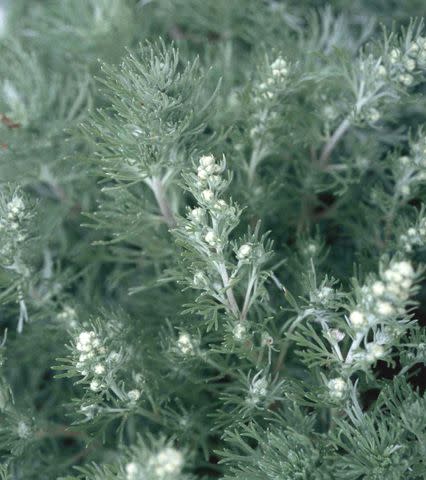
Grow artemisia for its silver foliage that complements nearly all other perennials and ties together diverse colors within the garden. It's nothing short of stunning next to white or blue flowers. It thrives in hot, dry, sunny conditions like a south-facing slope. A number spread rapidly to the point of being aggressive. Zones 3-9
Baptista
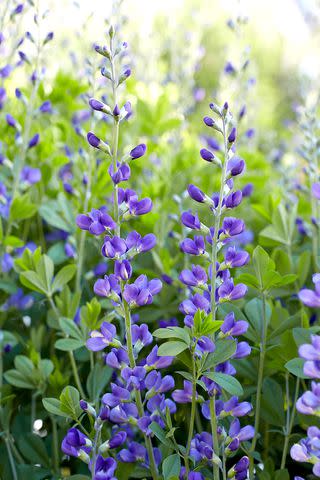
Baptisia is a tall plant with beautiful spires, often in a showy blue. It's a native prairie plant that bears long, tall spikes of pea-like blooms in late spring. As the flowers ripen, they become interesting black seedpods often used in fall arrangements. It is a drought-tolerant plant that forms a deep taproot. Choose its location carefully; it is difficult to transplant once established. Zones 3-8
Frequently Asked Questions
Does Jupiter's Beard attract wildlife?
<p>All kinds of pollinators and birds are drawn to fragrant Jupiter's Beard, including butterflies, bees, and birds. However, Jupiter's Beard isn't attractive to deer or rabbits, so they stay away.</p>
How big does Jupiter's Beard get?
<p>Jupiter’s Beard can grow to 3 feet tall and just as wide.<br/><br/></p>

